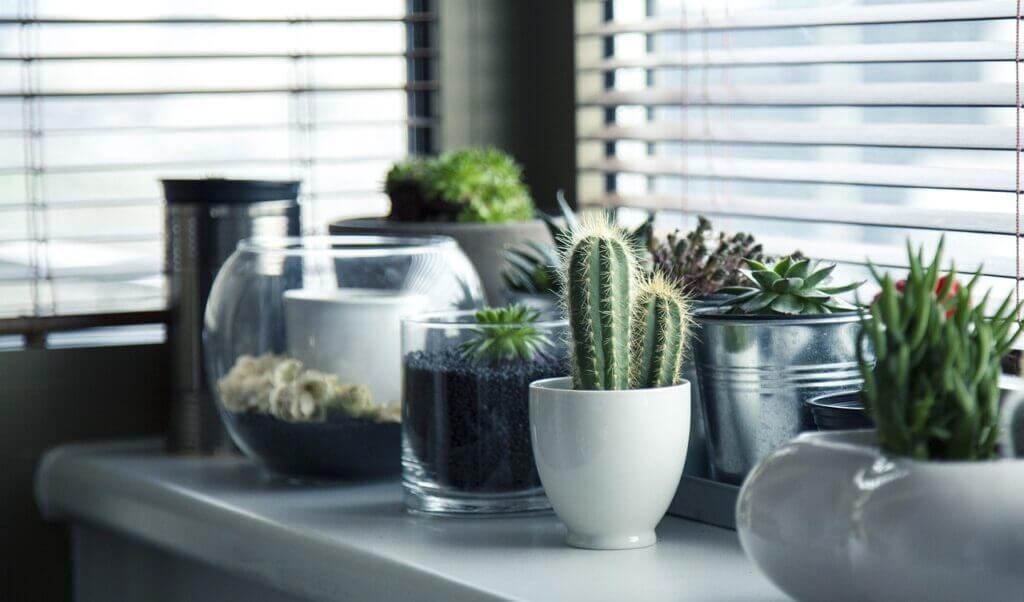If you’re an urban gardener seeking to optimize your green space, companion planting may just be the secret to success! By strategically pairing compatible plants, you can create a harmonious environment that maximizes growth, deters pests, and enhances the overall health of your garden. Not only will you reap the rewards of a vibrant and flourishing space, but you’ll also contribute to a sustainable and eco-friendly approach to gardening in the city. So grab your gardening gloves and let’s explore how companion planting can transform your urban oasis into a thriving haven of greenery!

Enhanced Pest Control
Natural insect repellent
One of the key benefits of companion planting in urban gardens is the enhanced pest control it provides. By strategically pairing certain plants together, you can naturally repel common garden pests without the need for harmful pesticides. Certain plants, such as marigolds and citronella, have natural insect-repellent properties that can help protect your garden from unwanted visitors. By incorporating these plants into your urban garden, you can create a natural barrier against pests while maintaining a safe and chemical-free environment.
Attracting beneficial insects
In addition to repelling pests, companion planting can also attract beneficial insects to your urban garden. Some insects, such as ladybugs and lacewings, are natural predators of garden pests and can help control their populations. By planting flowers that attract these beneficial insects, such as dill, fennel, and yarrow, you can encourage a healthy and balanced ecosystem in your garden. These beneficial insects will not only help control pests but also contribute to pollination, ensuring the fertility and productivity of your urban garden.
Masking scents
Another clever technique of companion planting is using scent to mask and confuse pests. Some plants have strong odors that can deter pests from finding your crops, reducing the risk of infestations. For example, planting garlic, chives, and onions alongside susceptible plants can help mask their scent and protect them from being detected by pests. This simple but effective method can help keep your urban garden thriving and pest-free.
Improved Soil Fertility
Nitrogen fixation
Companion planting can greatly improve soil fertility in urban gardens, thanks to the concept of nitrogen fixation. Certain plants, known as nitrogen fixers, have the ability to convert atmospheric nitrogen into a form that is readily available for other plants to absorb and utilize. Legumes, such as peas and beans, are excellent examples of nitrogen-fixing plants. By planting these alongside nitrogen-demanding plants like leafy greens or tomatoes, you can create a symbiotic relationship that enriches the soil with nitrogen. This promotes healthy plant growth and reduces the need for synthetic fertilizers, making your urban garden more environmentally friendly.
Improved nutrient uptake
Companion planting also promotes improved nutrient uptake in urban gardens. Some plants, known as dynamic accumulators, have deep root systems that can access and absorb nutrients from deep within the soil. By interplanting dynamic accumulators, such as comfrey or dandelion, with nutrient-demanding plants, you can maximize the absorption of essential nutrients. In turn, this leads to healthier and more nutritious crops in your urban garden. Additionally, the deep root systems of these companion plants help break up compacted soil and improve its overall structure, further enhancing soil fertility.

Weed Suppression
Shading out weeds
One of the biggest challenges in urban gardening is weed control. However, companion planting offers an effective and natural solution to this problem. By utilizing plants with dense foliage or vigorous growth habits, you can shade out weeds and prevent them from taking over your garden. For instance, planting tall sunflowers or corn alongside shorter crops creates a natural shade barrier, limiting the growth of weeds and reducing the need for manual weeding. This not only saves time and effort but also fosters a healthier and more manageable garden environment.
Providing ground cover
Companion planting can also provide effective weed suppression through the use of ground cover plants. Plants with low-growing, spreading habits, such as thyme, clover, or creeping thyme, can form a dense carpet-like cover that prevents weeds from emerging and competing with your desired crops. These ground cover plants not only suppress weeds but also help retain soil moisture and prevent erosion. By incorporating them into your urban garden, you can enjoy a cleaner, more aesthetically pleasing landscape while minimizing weed-related issues.
Optimal Space Utilization
Vertical gardening
In urban gardens, where space is often limited, companion planting offers a fantastic solution for optimal space utilization. Vertical gardening techniques, such as trellising or using vertical structures, can be employed to grow climbing plants, such as beans, cucumbers, or tomatoes, alongside other crops. By training these plants to grow upward, you can conserve valuable ground space and maximize your garden’s potential. This allows you to grow a greater variety of plants in a smaller area, providing you with a bountiful harvest even in limited spaces.
Succession planting
Companion planting also lends itself well to succession planting. This technique involves staggering the planting of crops so that one crop is harvested, and another one is immediately planted in its place. By choosing companion plants that have different growth rates and maturation periods, you can effectively utilize the space throughout the entire growing season. For example, after harvesting lettuce, you can immediately plant fast-growing radishes or spinach in the same space. This way, you can enjoy a continuous supply of fresh produce and maximize your urban garden’s productivity.
Interplanting
Interplanting is another space-saving technique in companion planting that allows you to grow multiple crops in close proximity to one another. By selecting complementary plant combinations, such as planting lettuce and carrots together, you can optimize space utilization while benefiting from the synergistic effects of the plants. Some plants, like lettuce, have shallow root systems, while others, like carrots, have deeper roots. This allows them to grow harmoniously without competing for resources. By interplanting compatible crops, you can achieve higher crop yields in your urban garden and make the most of your available space.

Disease Prevention
Trap cropping
Companion planting can be a valuable tool for disease prevention in urban gardens by using a technique called trap cropping. Planting specific crops that are highly attractive to pests can divert their attention away from your primary crops, acting as a trap and preventing the spread of diseases. For example, if you are growing tomatoes, you can plant some basil nearby. This will attract pests such as tomato hornworms, which prefer basil. By sacrificing a few basil plants, you can protect your tomato crop from infestation and potential disease transmission. Trap cropping is a natural and effective way to maintain the health of your urban garden while minimizing the need for chemical interventions.
Repelling disease vectors
Companion planting also allows you to repel disease vectors, such as aphids or whiteflies, naturally. Some plants, like marigolds or nasturtiums, emit strong scents that act as natural repellents for these pests. By interplanting these companion plants alongside susceptible crops, you can create a protective barrier that discourages pests from settling and spreading diseases. This reduces the likelihood of disease outbreaks in your urban garden and promotes a healthier growing environment for your plants.
Increased Crop Yield
Complementary growth habits
One of the most significant benefits of companion planting in urban gardens is the increased crop yield it can provide. By choosing companion plants with complementary growth habits, you can maximize the productivity of your garden. For example, planting tall crops like corn or sunflowers alongside vining plants like cucumbers or peas allows the shorter plants to climb upward, utilizing the vertical space. This symbiotic growth arrangement enables efficient utilization of sunlight and space, resulting in higher overall crop yields.
Maximizing space utilization
Companion planting also enables you to maximize space utilization and increase crop yield by carefully selecting plant combinations based on their spatial needs. For instance, interplanting compact plants, such as lettuce or radishes, with taller crops that have a more upright growth habit, creates a layered effect and maximizes the use of vertical space. This allows you to grow more plants in the same area, effectively increasing your garden’s capacity and productivity. By practicing companion planting, you unlock the potential for higher crop yields even in tight urban spaces.
Improved Flavor and Quality
Enhanced aroma and flavor
One delightful benefit of companion planting in urban gardens is the enhanced aroma and flavor it brings to your crops. Certain companion plants, such as herbs like basil or sage, can release aromatic compounds that improve the taste and fragrance of nearby plants. For example, planting basil alongside tomatoes not only repels pests but also imparts a delicious flavor to the tomatoes. Similarly, growing rosemary near carrots can enhance their taste and aroma. By incorporating these aromatic companion plants, you can elevate the flavor and quality of your crops, creating a truly enjoyable experience for your taste buds.
Enhanced nutritional content
Companion planting can also contribute to the improved nutritional content of your urban garden’s produce. Some companion plants work symbiotically by enhancing nutrient absorption or fixing trace minerals from the soil. For example, planting chives or garlic alongside brassicas can protect them from pests while also improving their nutrient profile. Additionally, incorporating legumes, such as beans or peas, into your companion planting scheme can increase the nitrogen content in the soil, enriching the nutritional value of the surrounding plants. By harnessing the power of companion planting, you can ensure that your urban garden’s produce is not only flavorful but also packed with essential vitamins and minerals.
Aesthetic Value
Colorful and diverse plant combinations
Companion planting offers not only practical benefits but also aesthetic appeal to your urban garden. By carefully selecting vibrant and diverse plant combinations, you can create a visually stunning landscape that is a joy to behold. For instance, pairing flowers with vegetables not only adds beauty but also attracts pollinators, contributing to the overall health and productivity of your garden. Experimenting with different color combinations, shapes, and textures allows you to create a visually pleasing and harmonious urban garden that is not only productive but also a delightful oasis.
Sustainable Urban Environment
Reduced chemical use
In today’s urban gardening, sustainability is a concern for many gardeners. Companion planting offers a sustainable approach to gardening by reducing the reliance on chemical pesticides and fertilizers. By utilizing companion plants with natural pest-repellent properties, you can minimize the need for harmful chemicals that can negatively impact the environment and human health. Additionally, the nitrogen fixation and nutrient uptake benefits of companion planting reduce the dependency on synthetic fertilizers, making your urban garden more ecologically sustainable. By adopting companion planting practices, you contribute to a healthier and more sustainable urban environment.
Promoting biodiversity
Another significant benefit of companion planting in urban gardens is the promotion of biodiversity. By creating a diverse and interconnected ecosystem through companion planting, you encourage a wide range of beneficial insects, birds, and other wildlife to thrive in your garden. The presence of these diverse species not only adds beauty and charm to your urban garden but also helps maintain a balanced and healthy ecosystem. Increased biodiversity helps control pest populations naturally and creates a sustainable environment that supports the long-term success of your urban gardening endeavors.
Educational Opportunity
Teaching about plant interactions
Companion planting presents an excellent educational opportunity for both children and adults alike. By practicing companion planting in your urban garden, you can learn firsthand about the fascinating interactions between different plant species. Teaching about the mutually beneficial relationships between plants, such as nitrogen fixation or repelling pests, promotes ecological awareness and helps cultivate a deeper understanding of the natural world. This hands-on experience provides a valuable learning opportunity for individuals of all ages, fostering a sense of connection with nature and encouraging sustainable gardening practices.
Promoting environmental awareness
Companion planting in urban gardens also serves as a powerful tool for promoting environmental awareness. By implementing sustainable gardening techniques, such as reducing chemical use and promoting biodiversity, you can create a positive impact on the environment and inspire others to do the same. Engaging in companion planting not only benefits your garden but also contributes to the larger effort of creating a more environmentally conscious society. By sharing your experiences and knowledge with others, you can promote a greater understanding of the importance of sustainable practices and encourage a greener and more sustainable urban environment.
In conclusion, companion planting offers a multitude of benefits for urban gardens. From enhancing pest control and improving soil fertility, to suppressing weeds and maximizing space utilization, companion planting provides a holistic and sustainable approach to gardening. Not only does it lead to increased crop yield and improved flavor and quality, but it also adds aesthetic value to your garden. It promotes a sustainable urban environment by reducing chemical use and promoting biodiversity. Moreover, companion planting presents an educational opportunity to learn about plant interactions and promotes environmental awareness. By incorporating companion planting practices into your urban garden, you can create a thriving, beautiful, and environmentally friendly oasis right in the heart of the city.


